00:00
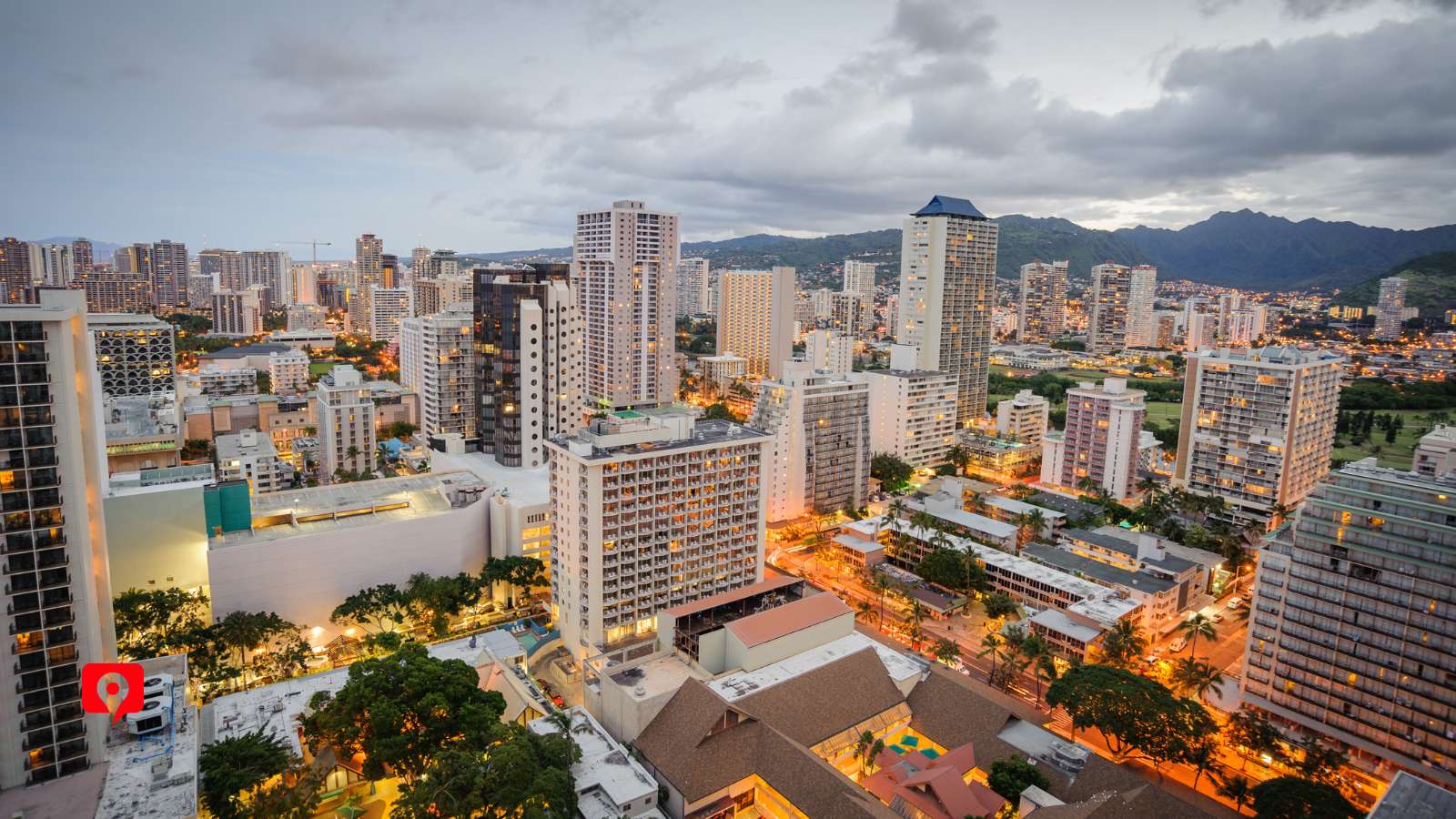
Downtown Honolulu captivates with a blend of history, culture, and natural beauty. Iolani Palace, the only royal residence in the U.S., offers a glimpse into Hawaii’s regal past, while the King Kamehameha Statue honors the monarch who unified the islands. Nearby, the Hawaii State Capitol and Honolulu City Hall reflect the transition from monarchy to statehood.
The spiritual heart of the area is Kawaiahaʻo Church, the “Westminster Abbey of the Pacific,” alongside the Hawaiian Mission Houses, which reveal the impact of early missionaries. Nature lovers can find tranquility at Foster Botanical Garden or enjoy harbor views at Aloha Tower Marketplace.
Chinatown adds vibrancy with its bustling markets, galleries, and diverse cuisine, while the Hawaii Theatre Center enriches the arts scene with its performances. Combining historic landmarks, cultural treasures, and scenic charm, Downtown Honolulu offers a compelling glimpse into Hawaii’s unique legacy and dynamic present.
Reaching Downtown Honolulu is easy and convenient, whether flying in or driving. Located at the heart of the city, it is well-connected by major roads and public transportation.
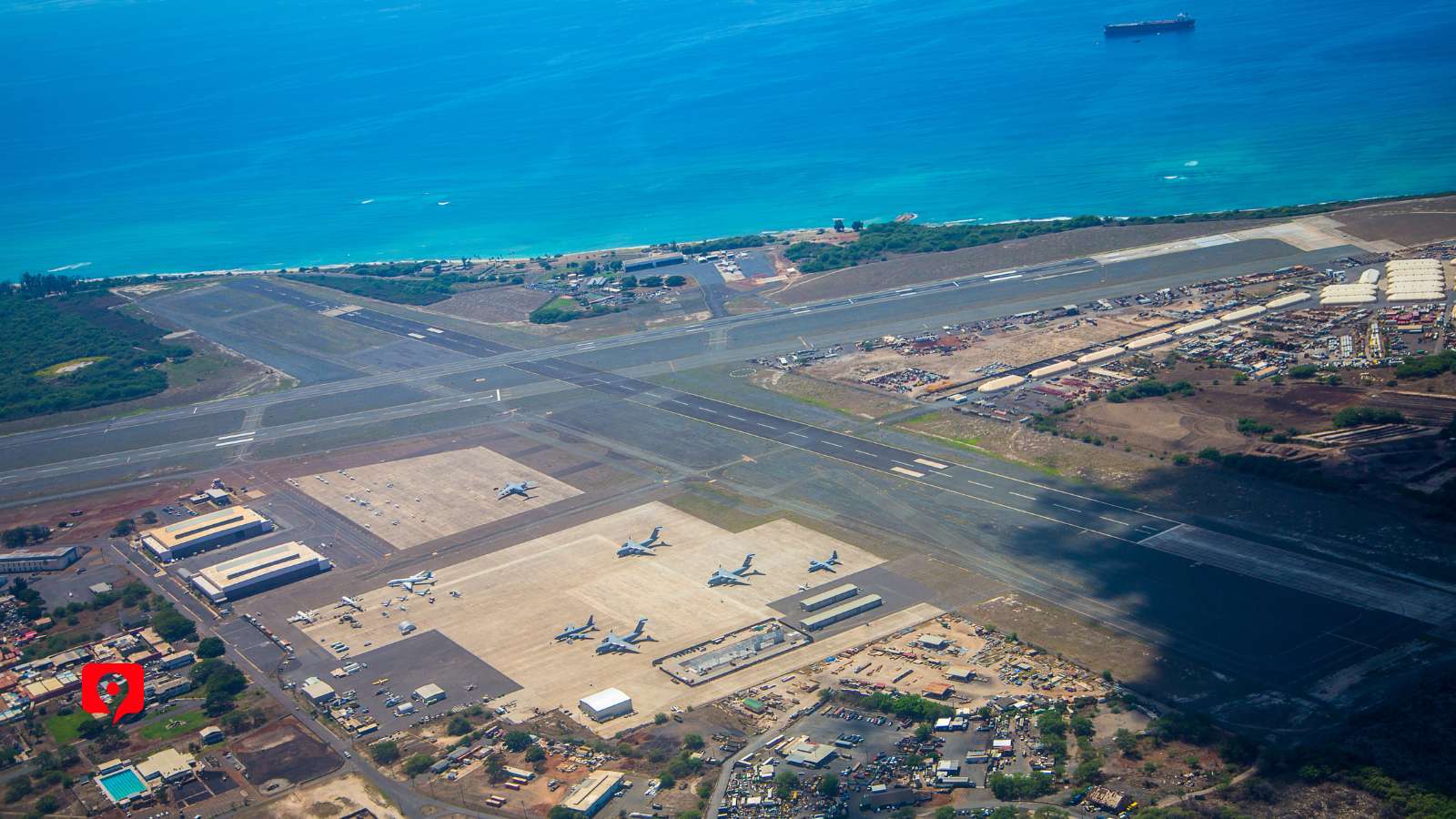
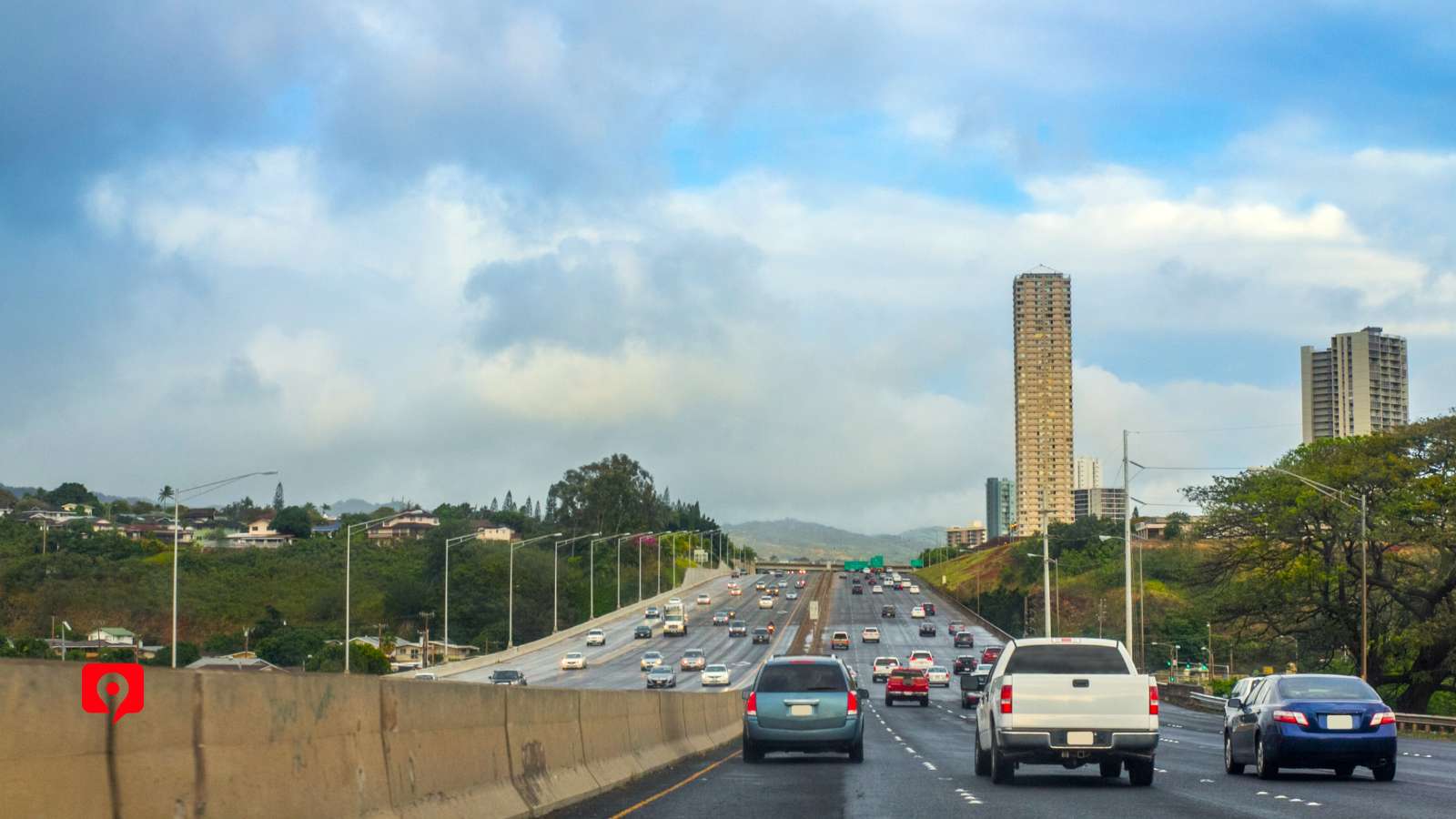
Downtown Honolulu caters to a variety of travelers with its diverse accommodations. Luxury hotels in the area offer premium amenities like rooftop lounges, fine dining, and stunning city or ocean views, all within walking distance of key landmarks.
For a more distinctive experience, boutique hotels provide a blend of style and personalized service. These properties often feature unique designs and are conveniently located near Downtown’s cultural and historic sites, as well as its bustling dining and nightlife.
Travelers on a budget will find affordable hotels and hostels offering clean, comfortable accommodations without compromising on location. These budget-friendly options make it easy to explore the area’s vibrant attractions and rich history without exceeding your travel expenses.
Downtown Honolulu is a year-round destination, with each season offering unique experiences. Winter (December to February) is perfect for escaping colder climates, featuring warm weather and festive activities. It’s also a great time to explore the city’s cultural landmarks while enjoying the cooler tropical breeze.
Spring (March to May) brings fewer crowds and pleasant temperatures, making it ideal for walking tours and outdoor events. The season offers a relaxed pace, perfect for soaking in Downtown’s historic charm and vibrant local culture.
Summer (June to August) is lively and bustling, with warm days and an abundance of festivals and events. It’s a popular time for exploring Downtown’s art scene, markets, and lively atmosphere, but expect larger crowds.
Autumn (September to November) offers a quieter vibe with milder weather and fewer visitors, providing a perfect balance for sightseeing and enjoying lower hotel rates. Regardless of the season, Downtown Honolulu’s rich history and dynamic energy promise a memorable visit.
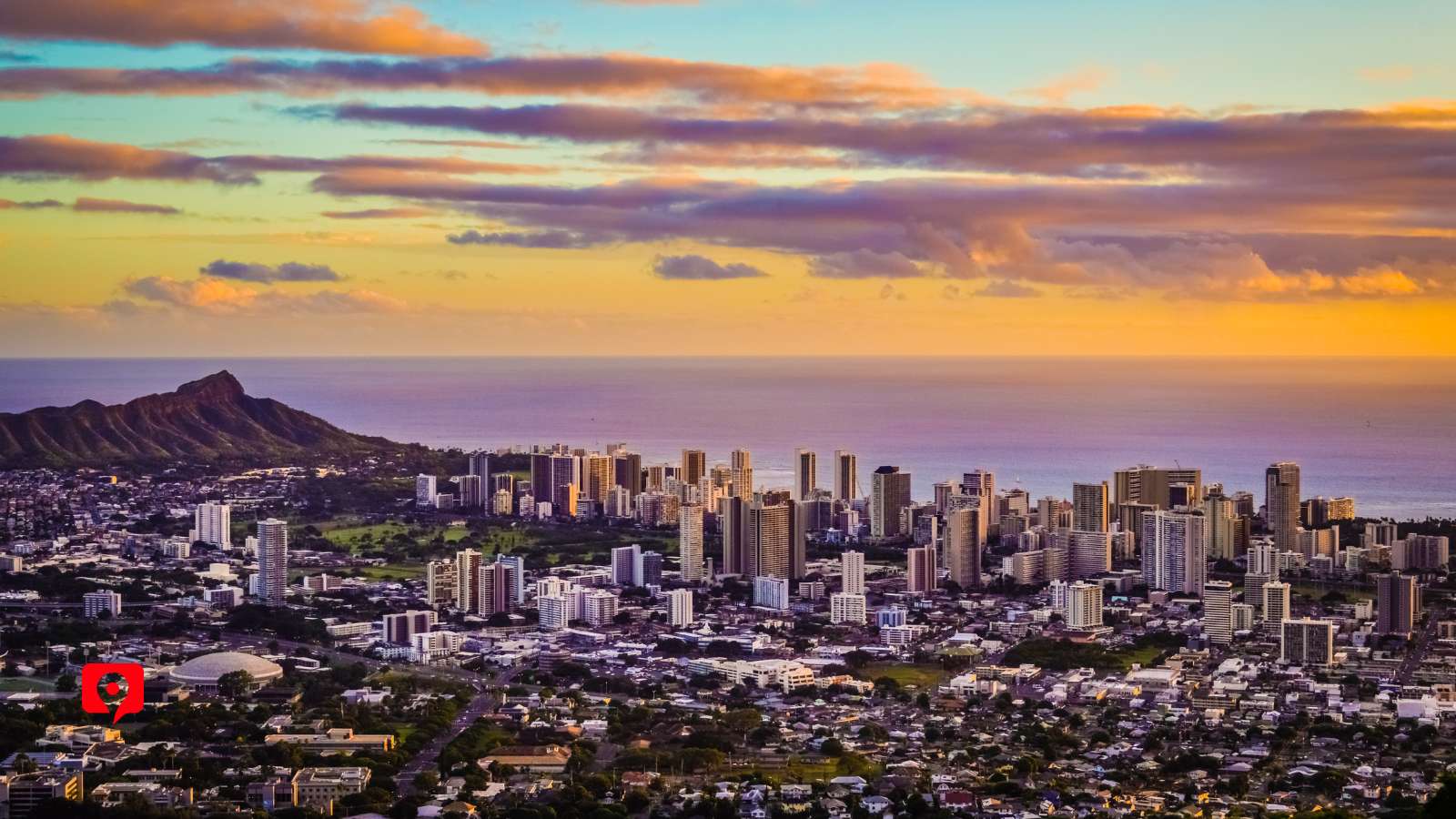
For a quick half-day tour of Downtown Honolulu, focus on key historical landmarks such as Iolani Palace, the King Kamehameha Statue, and the Hawaii State Capitol. This brief tour provides a rich glimpse into Honolulu’s royal and legislative history.
If you have a full day, start with the morning’s historical sites, then add Kawaiahaʻo Church and the Hawaiian Mission Houses Historic Site and Archives. Spend the afternoon exploring the vibrant streets and unique shops of Chinatown, which offers a blend of cultural heritage and local cuisine.
For a comprehensive two-day visit, the first day’s itinerary can be extended by exploring the Honolulu Museum of Art and relaxing at Foster Botanical Garden or enjoying the views at Aloha Tower Marketplace. On the second day, perhaps catch a performance at the Hawaii Theatre Center or delve deeper into Chinatown’s culinary scene, rounding out a thorough exploration of Downtown Honolulu’s offerings. Each plan allows for a personalized experience, from a swift overview to an in-depth exploration.
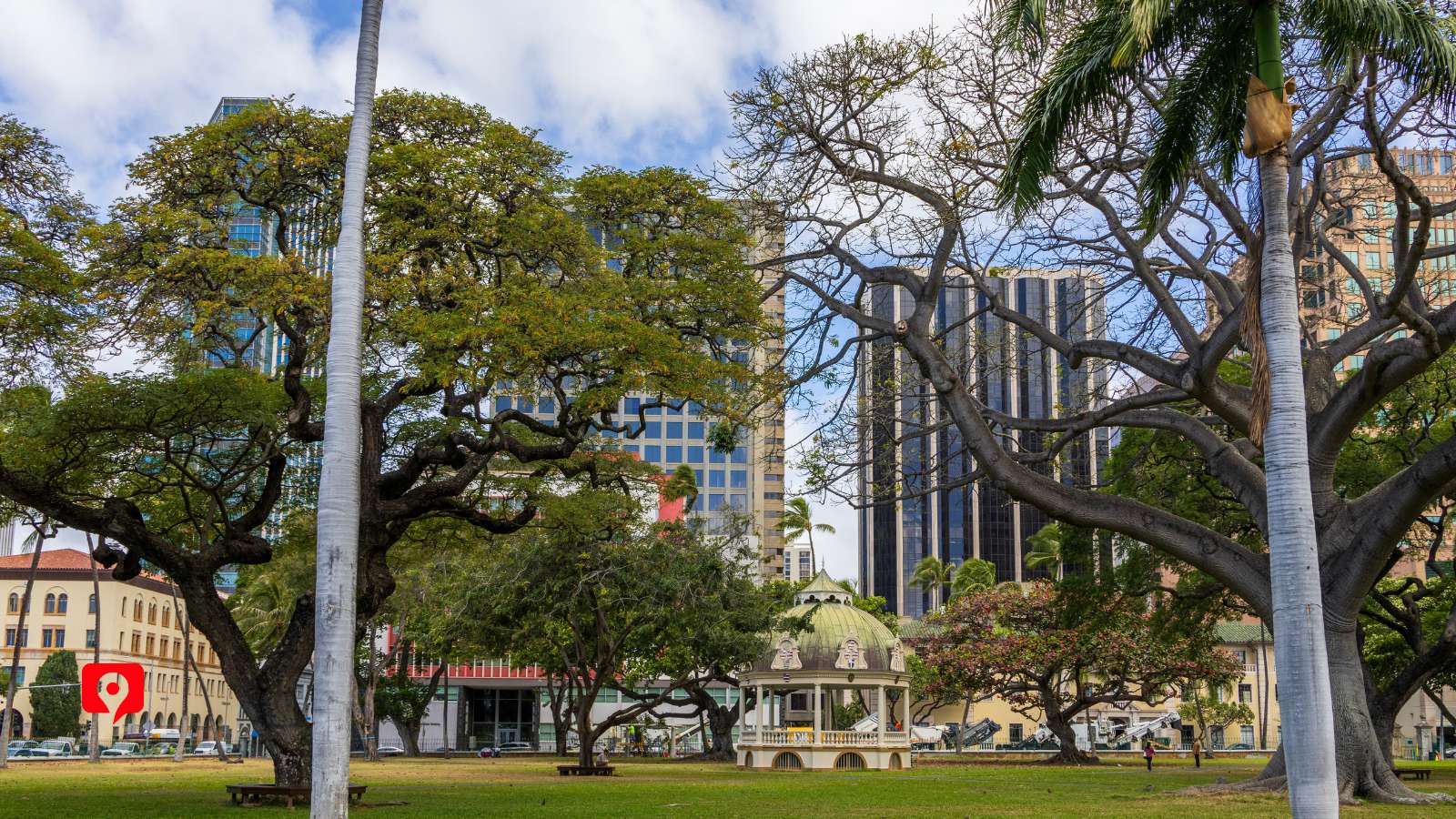
Downtown Honolulu offers a serene escape even during busy times, particularly if you plan strategically. To avoid the crowds, consider visiting during the shoulder seasons of late spring (April to May) and early fall (September to October). These periods provide pleasant weather with fewer tourists, allowing for a more tranquil exploration of the city’s historic sites and bustling streets.
Weekday visits are ideal for experiencing popular attractions like Iolani Palace and the King Kamehameha Statue without the weekend throngs. Early mornings or later in the afternoon are also optimal times for exploring, avoiding the peak tourist hours and enjoying cooler temperatures. For those who prefer quieter moments, wander through the less crowded areas such as the Capitol District or the artsy and diverse scenes of Chinatown. These tips ensure a more relaxed and intimate experience of Downtown Honolulu’s rich culture and vibrant history.
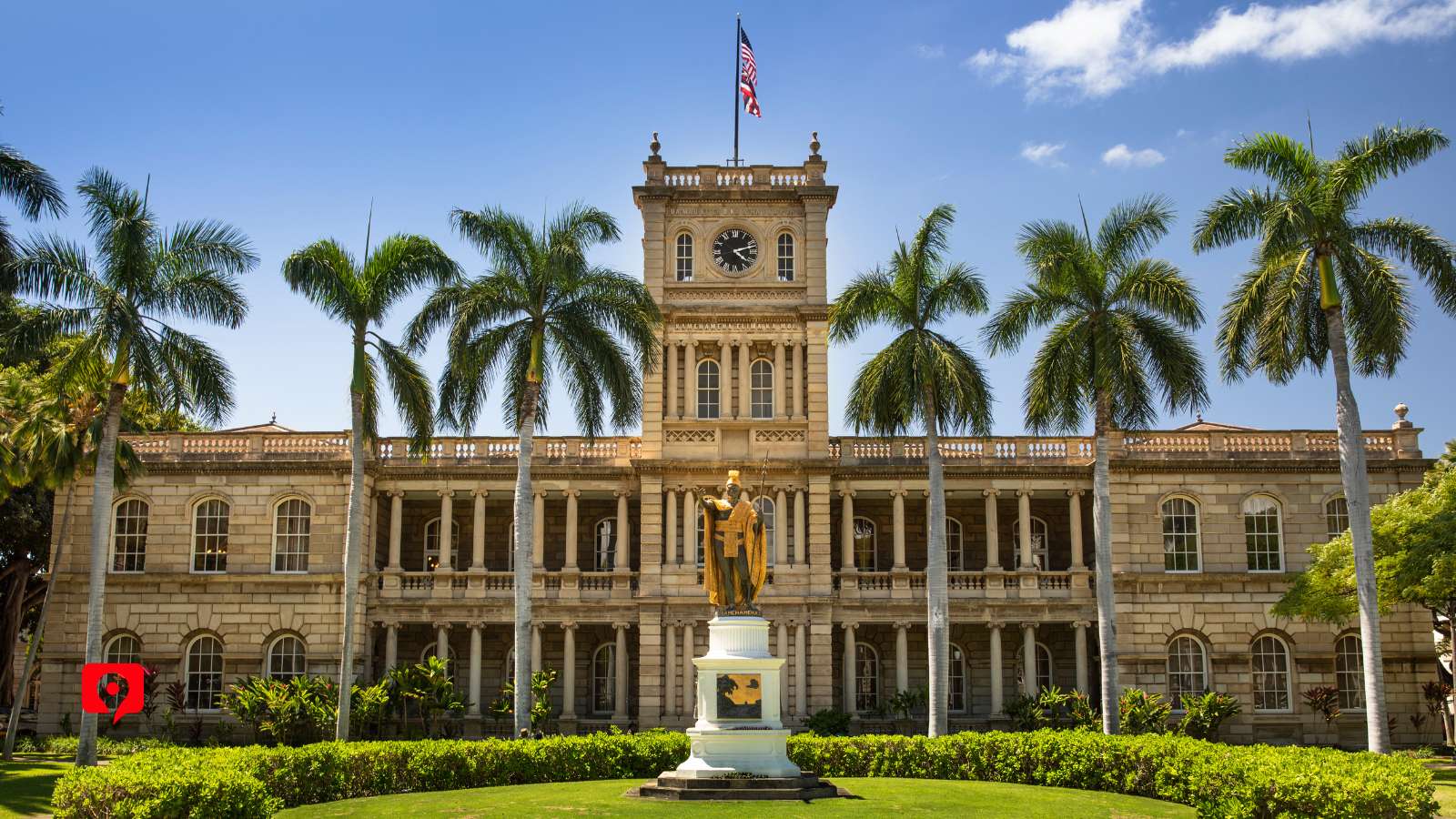
Iolani Palace
Iolani Palace, constructed in 1879, served as the official residence of Hawaii’s monarchs, King Kalakaua and Queen Liliʻuokalani. This unique structure features a blend of European architectural styles with Hawaiian influences. The palace housed significant moments in Hawaii’s history, including state functions and political upheaval. Visitors can explore its richly decorated rooms, original furnishings, and exhibits detailing the monarchy’s role in shaping Hawaii’s cultural and political identity.
King Kamehameha Statue
The King Kamehameha Statue honors Hawaii’s first monarch, who unified the Hawaiian Islands in 1810. Standing tall in front of the Aliʻiōlani Hale in Honolulu, this iconic bronze statue is adorned with a traditional feathered cloak and helmet, symbolizing his royal authority. The statue commemorates Kamehameha’s legacy as a fierce warrior and visionary leader who sought to protect Hawaiian sovereignty. It serves as a powerful symbol of pride and resilience for the people of Hawaii.
Honolulu City Hall
Honolulu City Hall, known as Honolulu Hale, was built in 1928 and features Mediterranean Revival architecture with Italian and Spanish influences. The building houses the offices of the mayor and city council chambers. Its design includes arched windows, decorative tile work, and a landscaped courtyard, reflecting both Western and Hawaiian architectural traditions. Located on King Street, Honolulu Hale is a prominent example of early 20th-century civic architecture in Hawaii.
Hawaii State Capitol
The Hawaii State Capitol, located in downtown Honolulu, serves as the center of Hawaii’s government. Completed in 1969, its modern architectural design reflects Hawaiian culture and natural elements. The building’s open-air rotunda symbolizes the connection between the people and their leaders, while its columns resemble royal palm trees. Surrounded by reflecting pools representing the Pacific Ocean, the Capitol’s unique design emphasizes Hawaii’s identity, standing apart from traditional state capitols in the United States.
Hawaiian Mission Houses Historic Site and Archives
The Hawaiian Mission Houses Historic Site and Archives preserves the legacy of Hawaii’s missionary era. Located in Honolulu, this National Historic Landmark includes three restored New England-style buildings from the 19th century, showcasing life during Hawaii’s early missionary period. The site features original artifacts, a printing press, and an extensive archive documenting Hawaiian history. Visitors can explore the influence of missionaries on Hawaiian culture, education, and governance through guided tours and educational programs.
Downtown Honolulu’s Chinatown district buzzes with energy, offering a mix of traditional and contemporary experiences. Wander through open-air markets selling fresh produce, exotic flowers, and seafood. Explore unique boutiques and art galleries showcasing local talent, and indulge in the district’s diverse dining scene, ranging from dim sum to fusion cuisine. Chinatown’s vibrant nightlife, with its speakeasies and live music venues, makes it a hotspot after dark.
Escape the city’s hustle and bustle at Foster Botanical Garden, a serene sanctuary showcasing tropical plants and rare species from around the globe. Wander through themed gardens, marvel at towering trees planted in the 1800s, and enjoy seasonal floral displays. The butterfly garden and orchid conservatory offer vibrant, photo-worthy experiences for nature lovers.
No visit to Downtown Honolulu is complete without indulging in its culinary delights. From high-end eateries to local food trucks, the area offers a plethora of dining options. Signature dishes to try include loco moco, spam musubi, and shave ice—a perfect treat for the island’s warm climate.
Comfortable Clothing: Opt for breathable, lightweight clothing to navigate Honolulu’s warm climate comfortably. Include a mix of casual and slightly formal outfits for dining out or attending cultural events.
Walking Shoes: Comfortable sneakers or walking shoes are essential for exploring the historical and cultural sites spread across downtown.
Cultural Event Attire: Pack a nice outfit if you plan to visit the Hawaii Theatre or other formal venues.
Sun Protection: The Hawaiian sun can be intense. Bring sunscreen, sunglasses, and a hat to protect against UV rays while walking around the city.
Daypack: A compact yet spacious daypack is ideal for carrying essentials like water, snacks, and souvenirs.
Camera or Smartphone: Capture the architectural beauty and vibrant street scenes of Downtown Honolulu. Consider extra batteries or a power bank.
Reusable Water Bottle: Stay hydrated as you wander through the city’s bustling streets and beautiful parks.
Light Rain Jacket: Occasional showers are common in Honolulu, so a light rain jacket could come in handy.
Please fill out this form and let us know
17 Mile Drive Acadia ALABAMA Alberta Arches ARIZONA Badlands Banff Kamploos Big Bend National Park Big Island Big Sur Black Hills Blue Lagoon Bryce Canyon CALIFORNIA CANADA Canadian Rockies Canyonlands Capitol Reef Catskills COLORADO Cuyahoga Valley Death Valley Delicate Arch Everglades FLORIDA Florida Keys Glacier Grand Canyon Grand Teton HAWAII Honolulu Iceland Iceland Golden Circle Itineraries Joshua Tree Kancamagus Kauai Keweenaw Lake Superior North Shore Lake Tahoe Lassen Volcanic Louisiana MAINE Massachusetts Maui MICHIGAN Miinesota MINNESOTA Montana Monument Valley Mount Lemmon Mount Rainier Mount Rushmore National Park NEVADA New Hampshire New Mexico NEW YORK Niagara Falls NORTH CAROLINA North Dakota Oahu Ohio Old Faithful olympic national park Ontario OREGON Oregon Coast Outer Banks Petrified Forest National Park Point Reyes Shipwreck Redwood Reykjanes Peninsula Rocky Mountain Saguaro National Park Santa Fe Sedona SEQUOIA & KINGS CANYON NATIONAL PARK Shenandoah Smokies Snæfellsnes Peninsula Sonoma And Napa Valley SOUTH DAKOTA Tech Tips TENNESSEE Texas Theodore Roosevelt Travel Tips Trip Planners USA UTAH Videos VIRGINIA WASHINGTON West Virginia WYOMING Yellowstone Yosemite Zion
